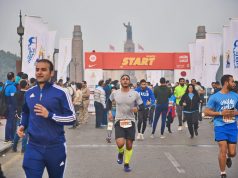Cairo East Magazine met with leading Cairo homeopath Dina Sid Ahmed to get some answers.
By Maggie Balbaa
CEM: What is Homeopathy? And what are the principles behind it?
DSA: Homeopathy is a holistic form of medicine developed by Samuel Hahnemann over 250 years ago. It is based on the law of “like cures like“. This concept means that a substance which can cause symptoms, whether physical, emotional or mental, to appear in a healthy human being can restore to health an individual showing similar symptoms. For example: If you peel an onion you may produce tears and your nose may run. When these symptoms are present in the common cold or hay fever, Allium Cepa (the homeopathic remedy made from onion) may be prescribed. Hahnemann named the practice homeopathy from the Greek homoios (the same) and pathos (suffering). When a bee stings you, you feel a burning pain and the tissues surrounding the area swell up. Some relief is gained from applying cold to the area. If you had swollen tonsils with burning and stinging pain relieved by cold, a homeopathic remedy prepared from the same source Apis Mellifica could cure.
Homeopathy is a holistic form of medicine which means that it does not treat individual symptoms or a named diagnosis but rather a complete picture of the whole individual, physical, mental, and emotional, and prescribes according to the constitution of the person… and this is called the constitutional remedy of a person.
Although there is much skepticism about homeopathy due to the incredibly diluted remedies that are used, its success with patients has meant that it has continued to grow and develop over the past 200 years.
Where did you become a certified homeopath? And how long did it take to study it?
I first developed an interest in homeopathy when I became a mother and was searching for gentle ways of dealing with everyday childhood illnesses. Intrigued by the results I attended the first ever “homeopathic professional training” offered, here, in Cairo from 1998-2000, and acquired my diploma from London College of Homeopathy. Then I received another professional diploma from Lakeland College of Homeopathy in 2003. Since becoming a professional homeopath I regularly attend other training courses with leading homeopaths from the USA, UK and India.
One of the most memorable courses involved an extraordinary trip I made to the Himalayas in 2009 to deepen my understanding of the Sankaran sensation method. I then complemented my work with other tools such as Australian Bush Flowers, Enneagram personality analysis and Reiki energy healing.
What is the difference between medical treatment and homeopathic treatment?
Medical treatment usually will not associate the emotional with the physical symptoms of the person, while homeopathy treats the person as a whole rather than just the condition. So in consultation the homeopath asks questions about mental, emotional and physical characteristics, previous medical history and family history as well as the presenting symptoms, in order to obtain a complete picture of you as an individual.
Can it be used concurrently with normal medications as prescribed by a doctor?
Yes, definitely. But some medical treatments masque completely the effect of homeopathy like cortisone and anti histamine, so you do not know if the homeopathic remedy is working or not, and so it becomes useless. Anti-depressants, for example, suppress depression symptoms, which renders a homeopathy remedy useless because of the suppressed symptoms.
I would recommend that you should always tell the homeopath if you are on any kind of medication.
What are the remedies made of?
The homeopathic medicines, or remedies, are made out of plants, minerals and other natural substances. These are highly diluted during a process called potentization. During this process the remedy is shaken, in order to trigger the reaction within the remedy, which makes it potent. The more a remedy is diluted and shaken, the more potent or powerful it becomes.
What does homeopathy treat?
Homeopathy can treat migraine, flu, constipation, morning sickness, allergy, skin condition, IBS, anxiety, panic attacks, insomnia, depression and many other acute and chronic symptoms. It can help children with ADHD, teething, ear infections, measles, warts, colic, bedwetting, night terrors, recurrent coughs and colds, eating problems, croup and other ailments. Homeopathy has also been known to help alongside conventional medicine and can alleviate the side effects of some drugs.
Are there any contra-indications?
Homeopathy is safe and non-toxic and so even kids, pregnant women and babies can use it. Sometimes there is a reaction after taking the remedy, which often takes the form of a discharge, diarrhea or return of an old symptom. This is because the body has been stimulated into throwing out toxic material. So you may experience a temporary release of emotional symptoms. This is a good sign and means that the remedy has triggered a healing process, and is dealing with conditions that were previously suppressed and not dealt with previously.
What is the first aid kit of homeopathy that is a must-have in every home?
There is the homeopathy first aid kit that is sold with the remedies in low potency and it can be used with children and grown ups. The kits usually come with a little booklet that gives instructions for each case.
My list would include Arnica for example. It is essential for any bruising and for post-operative cases, it works wonders in relieving pain. Aconite can work for sudden on-sets of conditions: cold, shock, fever… anything. There is also calendula; it is a disinfectant and antibacterial element that helps heal wounds. It can be also found as a cream. Chamomile is great too for calming babies especially during teething. It works like magic.






Comments are closed.